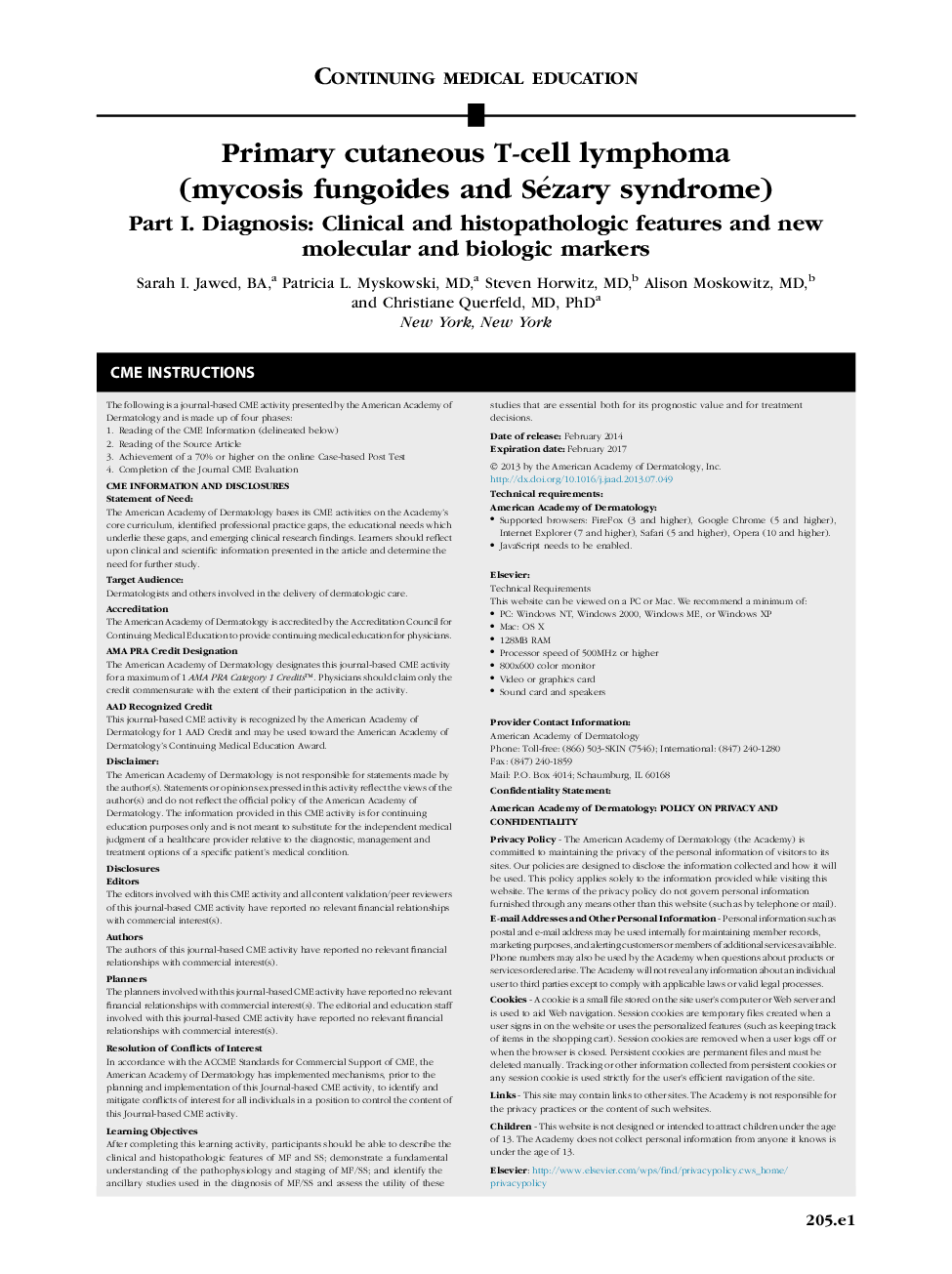| Article ID | Journal | Published Year | Pages | File Type |
|---|---|---|---|---|
| 6073291 | Journal of the American Academy of Dermatology | 2014 | 16 Pages |
Abstract
Mycosis fungoides (MF) and Sézary syndrome (SS) comprise approximately 53% of cutaneous lymphomas. Both MF and SS may clinically and histologically mimic benign skin conditions, posing a diagnostic challenge to the dermatologist. Precise clinicopathologic correlation is necessary to support a diagnosis, especially in the early stages of disease. In addition to the identification of histopathologic criteria, ancillary studies, including the identification of CD4+ T cells with aberrant immunophenotypes and T-cell receptor gene rearrangements within skin lesions and peripheral blood are used to support the diagnosis. Recent studies evaluating the pathogenesis of MF have found that the skin microenvironment, including immune cells, such as dendritic cells and reactive cytotoxic and regulatory T cells, plays a crucial supporting role in MF. The skin-homing ability of malignant T cells is the result of chemokines, cytokines, adhesion molecules, and defective apoptosis, and is believed to play a role in disease pathogenesis and progression. In addition, recent studies have also suggested that MF and SS arise from distinct memory TÂ cell subsets and advanced/erythrodermic MF and SS may be distinguished by identification of certain molecules, including Programmed-Death-1.
Keywords
PD-1large cell transformationTCrLCTISCLCLAGMFCTCLAPCTregHTLV-1emfcutaneous lymphocyte antigenantigen-presenting cellGenetic aberrationsprognostic valueinterleukinRegulatory T cellsSézary syndromeMycosis fungoidesCutaneous T-cell lymphomaTumor microenvironmentHistopathologyHuman T-lymphotropic virus type 1PathogenesisT-cell receptor
Related Topics
Health Sciences
Medicine and Dentistry
Dermatology
Authors
Sarah I. BA, Patricia L. MD, Steven MD, Alison MD, Christiane MD, PhD,
